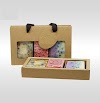Client vs. end user
The design and creation of a website necessarily implies taking into account the needs of those who commission it and obliges us to make choices. Even not knowingly deciding is a choice.
On several occasions we have stated that each website is built for a specific purpose.
In making these choices it must be clear to what needs we are responding: those of the entrepreneur who commissions the activity; those of the agency and the designers who carry it out; those of the end user to whom the product is addressed and who must consult and use it.
The tastes and needs of those we take into consideration?
"A website should not appeal to those who make it, nor to those who pay it but only to those who use it."
For this reason, before designing, we must be sure that we understand who the potential user, his behavior, his tastes and his needs are.
We must be able to interpret and speak his language otherwise we do not understand each other. We risk creating a perfect artefact from (our) aesthetic and functional point of view but not being interesting for those who must use it.
Aesthetic beauty vs functionality
Expressions such as: it's nice, it's beautiful, and they are very useful to satisfy our ego, both of the graphic designer and the entrepreneur who thinks he has bought a painting or a work of art.
Only if we are able to add substance to these expressions and we are focused on the product / service and on the users to whom we turn the money is spent productively.
Every activity must be functional to the objectives one has given oneself. Functional means that it must be adapted to the use for which it is intended and be able to satisfy a specific need that we have been able to intercept and to which we want to respond.
We must design for the user
Before putting a website online like Wikipedia page creator or creating an email or banner for an advertising campaign, we need to be sure that the choices we make are the best possible, compared to the context in which we operate on the objectives we set ourselves.
The concepts of user experience (so-called User Experience) and user-centered design (User Centered Design) come to our aid, to which we must adhere as style and method of work and design.
Making the user experience simple is one of the keys to success. Try to think with your client's behavioral logics, test and test. Small changes can produce better usage experiences that translate into more contacts and sales and a growing customer loyalty.
Don't assume that what worked in other circumstances will work forever or that what worked so far will work well for tomorrow. Continue to check and repeat the tests over time. Behaviors may change and it is convenient to promptly intercept these changes to make the user experience the best possible.
Write for those who must read
If your website does not sell, if your advertising campaign does not receive clicks, if your mails are not read it is only your fault, not your reader. The solution is simple (at least to describe): try to understand who your audience is and write with the goal of making your message understood. To do this you have text, images, colors and videos at your disposal.
No matter how good we are at writing or composing texts, it is important to know who our reader will be and if he will be able to understand our message, without the possibility of misunderstanding and error.
The communication works if the message sent by the issuer reaches the recipient and if the recipient understands the message correctly and provides feedback.
The simplest advice is to take a test and send the message to several people. Only after the message has arrived at its destination can we believe that we have done a good job.
Tell us about important things and do it now
Reading on the web and on various digital devices takes on the behavior of the medium used.
Generally you read a few lines and then click on other pages that offer links and insights or to do a search on Google.
It is worthwhile to invert the structure of the communication and immediately tell the important things to say in order to eventually go into details. In a few lines and with some images we must be able to send exhaustively the message we are interested in passing.




